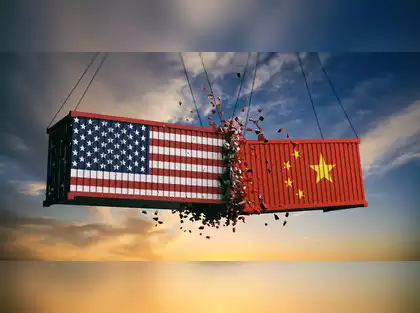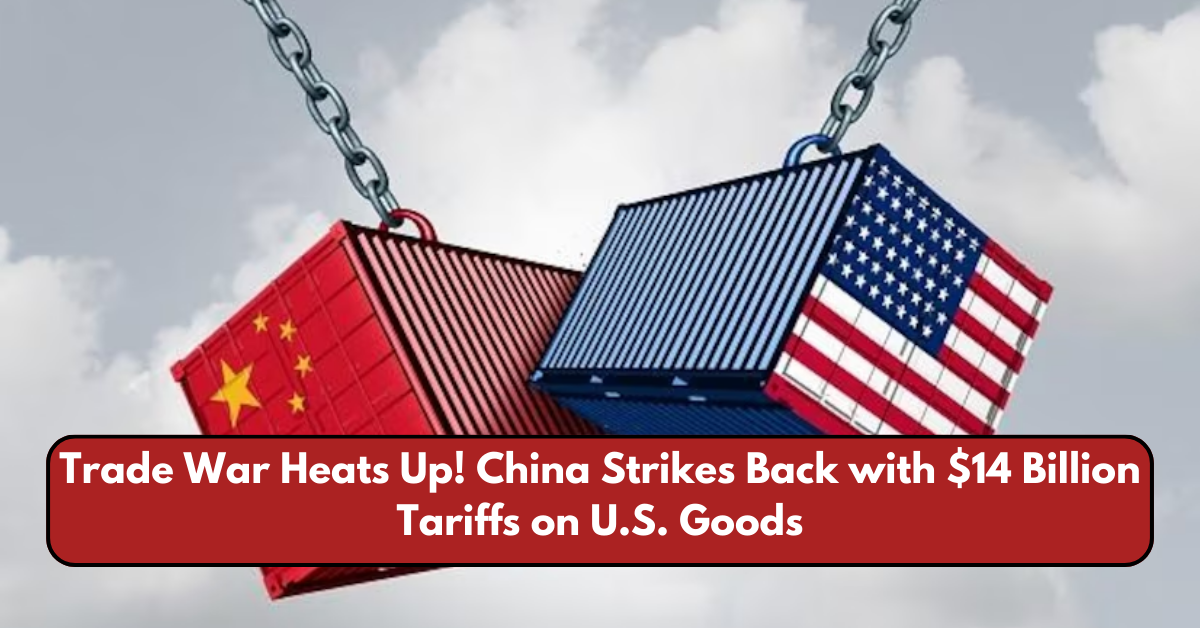The ongoing trade war between the United States and China has reached a new flashpoint as Beijing announced a fresh wave of retaliatory tariffs on $14 billion worth of American goods. The move, which follows Washington’s latest round of levies on Chinese products, signals escalating tensions between the world’s two largest economies.
China’s Retaliatory Measures
China’s latest tariffs will target key U.S. exports, including liquefied natural gas (LNG), coal, crude oil, and farm equipment. The levies, set between 10% and 15%, are intended to counteract the additional 10% tariffs imposed by the United States on Chinese imports last month.
The decision to strike back with tariffs follows a series of economic clashes between the two superpowers, with each side accusing the other of unfair trade practices. Beijing has also taken further steps beyond tariffs, including launching antitrust investigations into major U.S. corporations, such as Google and Illumina, as well as blacklisting certain American clothing brands.
Strategic Resources at Play
One of China’s most significant countermeasures has been its decision to restrict exports of critical rare earth metals. These minerals are essential for a variety of industries, including defense, technology, and green energy. With China controlling a large share of the global supply, this move could have severe repercussions for American manufacturers dependent on these materials.
Additionally, China has introduced stricter regulations on companies operating within its borders, increasing scrutiny of foreign investments and supply chain dependencies.
The U.S. Response

The Biden administration has condemned China’s actions and reaffirmed its commitment to holding Beijing accountable for what it calls “unfair trade practices.” The White House has stated that further trade restrictions could be introduced if China continues its economic retaliation.
The U.S. Department of Commerce (www.commerce.gov) has warned that the latest tariffs from Beijing could harm American businesses, particularly in the energy and agricultural sectors. Meanwhile, the U.S. Trade Representative’s office (www.ustr.gov) is reportedly considering additional measures to counteract China’s new tariffs.
Market Reactions and Economic Impact
The financial markets have reacted sharply to the news, with gold prices soaring to an all-time high of $2,900 per ounce as investors seek safe-haven assets amid concerns of prolonged economic friction. Stock markets also faced volatility, with indices such as the Dow Jones and the S&P 500 witnessing significant fluctuations.
For businesses, the latest trade developments present major challenges. American exporters, particularly those in the energy sector, are expected to feel the brunt of China’s tariffs. LNG shipments to China, which had been steadily increasing over the past few years, may now face a downturn as Beijing looks for alternative suppliers.
Looking Ahead: What’s Next?

With neither side showing signs of backing down, experts warn that the trade war could further escalate, potentially impacting global economic stability. The International Trade Administration (www.trade.gov) has advised American businesses to explore alternative markets and supply chain diversification strategies to mitigate risks associated with ongoing trade disputes.
While negotiations between Washington and Beijing remain an option, the prospects for a resolution remain uncertain. The deepening trade rift could lead to broader geopolitical consequences, affecting not only the two nations directly involved but also global trade partners who rely on stability between the U.S. and China.
As tensions mount, businesses, investors, and policymakers worldwide will be closely watching the next moves from both governments. Whether through diplomatic engagement or further economic hostilities, the outcome of this latest chapter in the U.S.-China trade war will shape the future of international commerce in the years to come.
This article has been carefully fact-checked by our editorial team to ensure accuracy and eliminate any misleading information. We are committed to maintaining the highest standards of integrity in our content.

Premlata is a seasoned finance writer with a keen eye for unraveling complex global financial systems. From government benefits to energy rebates and recruitment trends, she empowers readers with actionable insights and clarity. When she’s not crafting impactful articles, you can find her sharing her expertise on LinkedIn or connecting via email at [email protected].




